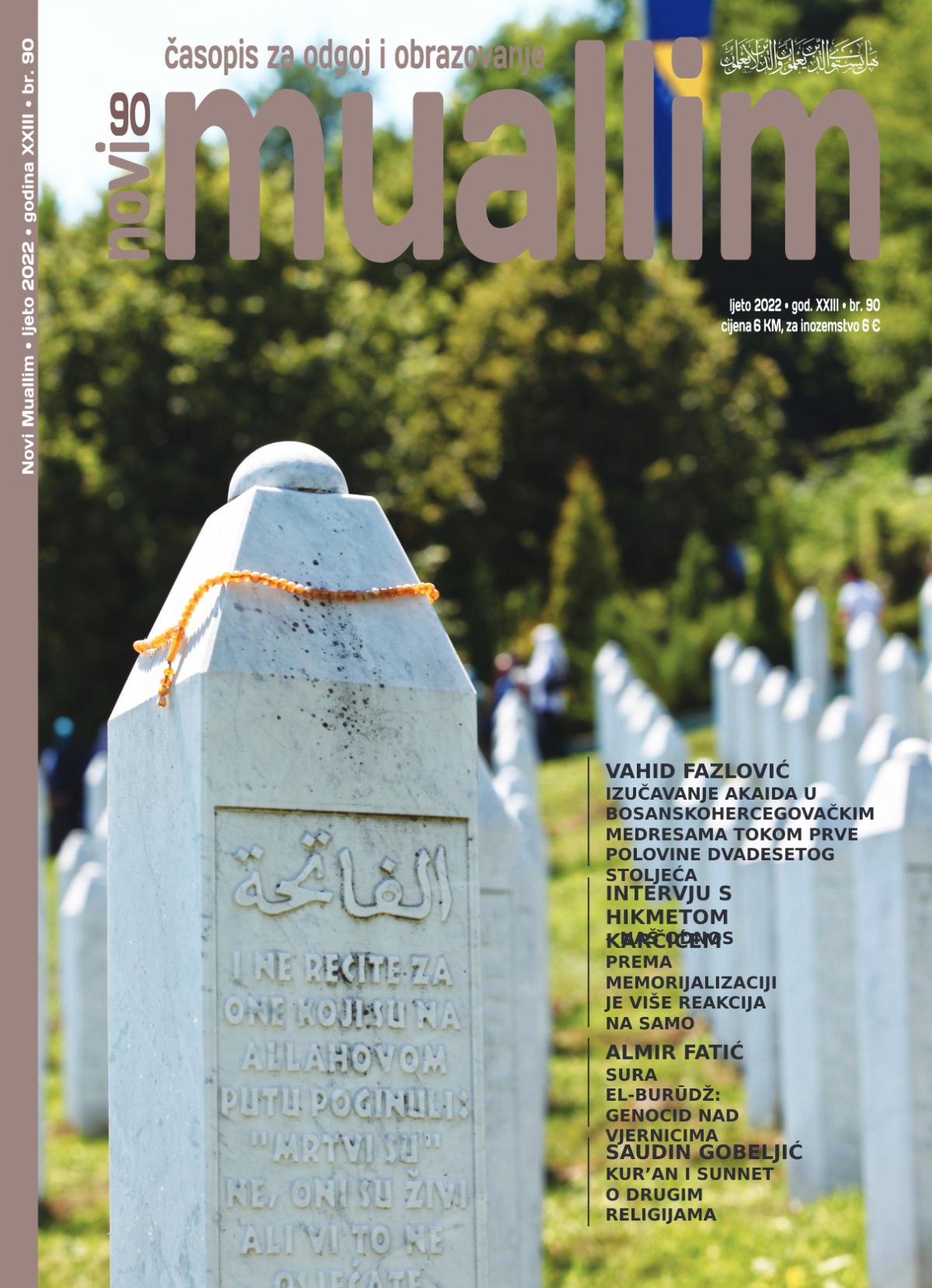IZUČAVANJE AKAIDA U BOSANSKOHERCEGOVAČKIM MEDRESAMA TOKOM PRVE POLOVINE DVADESETOG STOLJEĆA
DOI:
https://doi.org/10.26340/muallim.v23i90.1937Ključne riječi:
medresa, akaid, djela/udžbenici, prva polovina dvadesetog stoljeća, Bosna i HercegovinaSažetak
UDK: 28-184.3:373:28-78(497.6)
Kao jedna od značajnijih tekovina u povijesti ljudskog obrazovanja, medresa je stoljećima presudno doprinosila razvoju islamske teološke misli, a uz to je skoro u kontinuitetu utjecala i na afirmaciju opće kulture i prosvjetiteljstva. U našem radu ćemo se najprije ukratko osvrnuti na nastanak i razvoj ove poznate muslimanske školske ustanove, a zatim ćemo predstaviti izučavanje akaida u bosanskohercegovačkim medresama iz prve polovine dvadesetog stoljeća. U našim medresama tog vremena, islamske tradicionalne nauke, među kojima i akaid, izučavane su pretežno na temelju djela pisanih na arapskom, a u manjoj mjeri na turskom jeziku. Tek nakon tri prve decenije može se govoriti o značajnijim radovima pisanim na bosanskom jeziku koji su sporadično korišteni u izlaganju akaidskih nastavnih jedinica. Posebno je naglašena činjenica da je nauka o kelamu u bosanskim medresama tokom prve polovine dvadesetog stoljeća izlagana u skladu s najautoritativnijim djelima hanefijsko-maturidijske provenijencije, prema kojima se ova nauka tada izučavala i u najpoznatijim obrazovnim ustanovama u osmanskoj imperiji.
Downloads
Objavljeno
How to Cite
Broj časopisa
Rubrika
License
Naknada:
a. Časopis ne naplaćuje naknadu za obradu članaka (APC) i naknadu za podnošenje članaka.
Autori koji objavljuju u ovom časopisu pristaju na sljedeće uvijete:
- Autori zadržavaju autorska prava i pružaju časopisu pravo prvog objavljivanja, pri čemu će rad jednu godinu po objavljivanju biti podložan licenci Creative Commons imenovanje koja omogućuje drugima da dijele rad uz uvijet navođenja autorstva i izvornog objavljivanja u ovom časopisu.
- Autori mogu izraditi zasebne, ugovorne aranžmane za ne-ekskluzivnu distribuciju rada objavljenog u časopisu (npr. postavljanje u institucionalni repozitorij ili objavljivanje u knjizi), uz navođenje da je rad izvorno objavljen u ovom časopisu.


